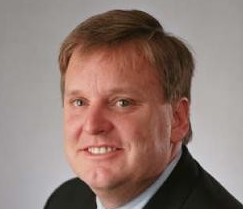By Damian Bierman, Gregg Drumma, Mo Takhim
Damian Bierman, Portware, Mo Takhim, ULLINK and Gregg Drumma, Gamma Three Trading take a closer look at the way the FIXatdl standard is changing algorithmic trading.
 Without a doubt, FIXatdl is going to revolutionize the way algos work.
Without a doubt, FIXatdl is going to revolutionize the way algos work.
On the front-end, FIXatdl standardizes an algo suite’s data flow, controls, and layout. Traders like it because it provides a more predictable look-and-feel, and an overall more consistent user experience.
On the back-end, platforms supporting FIXatdl will benefit from greater ease of maintenance and updates. With FIXatdl, updates to algo specifications, or customizations that brokers wish to present to their clients, can be realized by updating a single file. Gone will be the days of having to undergo lengthy development / release cycles to affect what may be conceptually a very simple change to a couple of tags for a particular strategy. By using FIXatdl, firms will be able to significantly decrease the time-to-market for new and updated trading strategies.
Considering the advantages and current maturity of the FIXatdl standard, it appears that wide-spread adoption is just around the corner. The ever increasing need for customer controlled order behavior and the chase for best execution dictates a change in the current process, and FIXatdl is a great recipe for delivering it.
 Ask any broker how seamlessly their algorithms are currently implemented in each buy-side system and even the most sophisticated algorithm providers will agree that this is a painful process that not only is expensive to them, but more importantly, time consuming.
Ask any broker how seamlessly their algorithms are currently implemented in each buy-side system and even the most sophisticated algorithm providers will agree that this is a painful process that not only is expensive to them, but more importantly, time consuming.
The question remains, with the progress this industry underwent over the past few years, how does this issue still exist, while the usage of algos has skyrocketed to unprecedented levels? Enter FIXatdl, the FIX algorithmic trading definition language. It was designed based on the input from several market participants representing broker-dealers, OMS/EMS vendors, buy-side users and other vendors.
From a buy-side perspective, clients can benefit from access to their brokers’ algorithmic trading strategies as soon as they are available in FIXatdl XML format, thereby significantly reducing the resources and time spent on performing analysis and development.
From a sell-side perspective, algo providers are able to develop and build FIXatdl compliant algorithms in a matter of hours instead of months. Brokers and other algorithm suppliers also have the ability to customize specific strategies based on their client needs and submit the XML file to be rendered immediately in their client’s front-end system.
This creates a whole new race in the vendor space. A few core EMS vendors have been pro-active in the adoption of FIXatdl and are already offering this service to their clients and others are slowly following their steps.
There is no argument that the potential upside of FIXatdl is huge. The reality is that the race to adopt FIXatdl has already started; the only question that remains is when you will join?
 With the release of FIXatdlSM, which allows algorithmic trading strategy providers to release their specifications in the industry standard, computer readable XML format, FIX Protocol Limited has created a standard that will enable firms across the industry to significantly decrease the time-to-market for new and updated trading strategies. When asked whether FIXatdl will revolutionize the way algorithmic interfaces are created and consumed, one must look beyond the technical requirements to understand how the current process works today. In my experience working with broker/dealers on introducing algo trading to the buy-side, it became apparent how many Order / Execution management systems (OMS/EMS) each broker had to integrate with. While there are large vendors of OMS / EMS solutions with hundreds of clients, there are many more in-house systems that are built with internal IT staff under many different technologies.
With the release of FIXatdlSM, which allows algorithmic trading strategy providers to release their specifications in the industry standard, computer readable XML format, FIX Protocol Limited has created a standard that will enable firms across the industry to significantly decrease the time-to-market for new and updated trading strategies. When asked whether FIXatdl will revolutionize the way algorithmic interfaces are created and consumed, one must look beyond the technical requirements to understand how the current process works today. In my experience working with broker/dealers on introducing algo trading to the buy-side, it became apparent how many Order / Execution management systems (OMS/EMS) each broker had to integrate with. While there are large vendors of OMS / EMS solutions with hundreds of clients, there are many more in-house systems that are built with internal IT staff under many different technologies.
Brokers are looking to get their latest products to the buy-side as soon as possible. The buy-side looks to take advantage of the offerings when they are available. For buy-side vendor solution providers, the process of incorporating new or updated algorithmic interfaces can sometimes be a form of consulting revenue. Meanwhile, the challenge for internally built systems is to allocate limited development resources away from system maintenance and support. As such, it’s no surprise that the current process of reading a spec and implementing it can cause months of delay until a final solution is rolled out into production.
With FIXatdl this process can be significantly accelerated by the following:
- Broker/Dealers can release their current specs as a document and/or in FIXatdl format.
- Broker/Dealers need to ensure a mutual benefit of adoption to the buy-side vendor solutions.
- Finally vendors and internal solutions must allocate development resources to build to the spec in their chosen technology. Since the broker/dealer specifications would now be available in FIXatdl format, there is incentive to do so.







 Order flow internalization and off-exchange crossing has been a common market practice in Japan for years. In 1998, Japanese regulators approved the introduction of the proprietary trading system (PTS), a privately operated night time marketplace. Then around 2005, we started to see PTSs operating during day time hours in direct competition with the traditional exchanges. In fact, PTSs are lit venues that operate similarly to the exchange. They have well defined market structure and market participants with price formation taking place in the visible order book. Most PTSs define their tick increments at about 1/10th that of the exchange. One major hurdle for PTSs is that they can not be more than 10% of the market share. Once they reach that point and hope to grow further, they will need to apply to become an exchange.
Order flow internalization and off-exchange crossing has been a common market practice in Japan for years. In 1998, Japanese regulators approved the introduction of the proprietary trading system (PTS), a privately operated night time marketplace. Then around 2005, we started to see PTSs operating during day time hours in direct competition with the traditional exchanges. In fact, PTSs are lit venues that operate similarly to the exchange. They have well defined market structure and market participants with price formation taking place in the visible order book. Most PTSs define their tick increments at about 1/10th that of the exchange. One major hurdle for PTSs is that they can not be more than 10% of the market share. Once they reach that point and hope to grow further, they will need to apply to become an exchange.
 (1) Could you tell us about the history of PTS in Japan and its growth over the past 3 years?
(1) Could you tell us about the history of PTS in Japan and its growth over the past 3 years?
 As recent history shows, China has a vast and diverse economic system, which contains a number of economic sub-systems, many of which have experienced growth in the last 36 months. In the media, headlines portray China to be an economic powerhouse, with expansion plans that have far reaching implications for these domains, including electronic trading in Financial Services.
As recent history shows, China has a vast and diverse economic system, which contains a number of economic sub-systems, many of which have experienced growth in the last 36 months. In the media, headlines portray China to be an economic powerhouse, with expansion plans that have far reaching implications for these domains, including electronic trading in Financial Services.
 U.S. equities and options trading has experienced several significant changes over the past few years. Some of the most important trends have been increased fragmentation, increased market volume, the growth of high-frequency trading (HFT), and (for equities trading) the rise in dark pool and other off-exchange trading. These factors have made analyzing market activity far more difficult, and the rapid growth of HFT has led many to question what that business entails. In response to this increased complexity and the general concerns about high-frequency trading, the SEC has proposed a Large Trader Identification rule in order to better review market activity.
U.S. equities and options trading has experienced several significant changes over the past few years. Some of the most important trends have been increased fragmentation, increased market volume, the growth of high-frequency trading (HFT), and (for equities trading) the rise in dark pool and other off-exchange trading. These factors have made analyzing market activity far more difficult, and the rapid growth of HFT has led many to question what that business entails. In response to this increased complexity and the general concerns about high-frequency trading, the SEC has proposed a Large Trader Identification rule in order to better review market activity.
 No stranger to turbulent change, the financial services industry continues to face revenue and cost pressures as well as an increased need to operate globally. Exchanges have merged and relocated, new financial centers and trading venues have appeared, and the market share for incumbent players has declined. Established players have been required to adjust both strategically and operationally to survive in this evolving marketplace. As a result, many firms are rethinking their technological infrastructure and evaluating co-located services.
No stranger to turbulent change, the financial services industry continues to face revenue and cost pressures as well as an increased need to operate globally. Exchanges have merged and relocated, new financial centers and trading venues have appeared, and the market share for incumbent players has declined. Established players have been required to adjust both strategically and operationally to survive in this evolving marketplace. As a result, many firms are rethinking their technological infrastructure and evaluating co-located services.
 In an era in which the average transaction size is declining world-wide, the Johannesburg Stock Exchange (JSE) is set to introduce on-exchange anonymous trading functionality to limit the market impact costs related to large transactions. Dubbed BlockX, it will allow for complete anonymity in the execution of large trades through hidden order functionality in the JSE’s existing central order book.
In an era in which the average transaction size is declining world-wide, the Johannesburg Stock Exchange (JSE) is set to introduce on-exchange anonymous trading functionality to limit the market impact costs related to large transactions. Dubbed BlockX, it will allow for complete anonymity in the execution of large trades through hidden order functionality in the JSE’s existing central order book.
 CameronTec conducted a worldwide CameronFIX user survey last month to capture latest industry opinion concerning the adoption and broader usage of the FIX Protocol; movement in FIX volumes since the financial crisis hit; and the greatest challenges currently facing FIX, its users and FPL itself. Annie Walsh, Chief Marketing Officer for CameronTec sums up the findings while drawing on industry participants for further comment.
CameronTec conducted a worldwide CameronFIX user survey last month to capture latest industry opinion concerning the adoption and broader usage of the FIX Protocol; movement in FIX volumes since the financial crisis hit; and the greatest challenges currently facing FIX, its users and FPL itself. Annie Walsh, Chief Marketing Officer for CameronTec sums up the findings while drawing on industry participants for further comment.